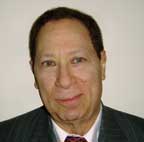Is your warehouse secretly hurting customer service and profits?
By Dick Friedman
Warehouse employment is at the lowest level in decades, but the level of mistakes is often higher than it should be. The result is angry customers – or a loss of sales – and higher operating costs. Yet few people recognize the impact that their warehouse can have on customer service and profits, especially if they have an expensive ERP software package. This article identifies the warehouse characteristics that can be hurting the cause.
Organization
In many warehouses, items are stored in a way that minimizes the time needed to pick them. But this kind of organization can sometimes increase the level of mistakes. The mistakes that occur include picking a wrong quantity, as well as the obvious mistake of picking the wrong item; put away mistakes can also be made.
Receiving and QC
This is the place where many downstream problems are created. Some of the problems get caught before customers or the bottom line are impacted, but the cost of detecting and correcting them is quite high.
Obviously, care must be paid to handling receipts from suppliers. But receipts from other company locations (such as inter-branch transfers) need just as much care, because of the tendency to assume the shipping location did it right. When handling customer returns, assume there are problems – damaged or wrong quantity (vs. RMA) – or never even bought here.
One way to improve the receiving and QC process is to capture data about problems found during the process (problems created in house, and those created by customers, trucking companies, etc.). Use the data to take actions to reduce the level of problems. For example, if the data shows that one particular company truck driver makes too many mistakes with customer returns, have a chat with that driver.
Put away
Think of this function as an integral part of receiving, not just a quick trip on a forklift or with a pallet jack or four-wheel cart. Experience has shown that more mistakes are made in this process than most people realize, and those mistakes are the major cause of downstream problems. Mistakes sometimes occur because the people putting away items are pickers who have been temporarily diverted from their main job and are in a hurry to quickly get back to picking.
Picking
This is where the greatest percentage of problems occur, even though many problems were set up by a mistake in receiving, QC or put away. An important principle to minimize mistakes is “do what the system tells you,” even when it seems wrong. In other words, pick what is shown on a pick ticket or RF device. For example, a picker sees an ample supply of an item, but the pick ticket shows a quantity to pick that is less than the quantity ordered by the customer. The picker may not realize that a portion of the quantity on a shelf is allocated to another customer, and therefore not available for the order being picked.
QC/Shipping
A common problem in shipping is the people who did the picking also do the QC work and the packing; sometimes, they load trucks, too. They don’t catch their own mistakes and shouldn’t be expected to do so.
If time, manpower and packaging permit, perform a final QC check as a truck is loaded; even if the truck is doing a branch replenishment or inter-branch transfer. Make sure each driver is given a correct manifest well before the truck leaves, so the driver can check it against the cargo.
Counting
Cycle count carefully. Some distributor personnel spend a lot of time chasing down items and information in order to have an accurate daily cycle count. If they had chosen the right items and the right time of day – which can be tricky – they would have spent a lot less time getting an accurate count.
And most important, do not change system quantity data without attempting to determine why there was a discrepancy at count time. If time and conditions permit, recount the discrepant items. Sometimes, a recount reveals there never was a discrepancy, just a mis-stored item.
Warehouse Management
To achieve great performance in a warehouse, offer warehouse personnel an incentive to do better than a mutually agreed upon goal. Perhaps, do better than the 90th percentile of performance in the industry.
Keep the place organized and clean. Clichés that still matter: a
place for everything, and everything in its place; cleanliness is next to godliness.
 Dick Friedman is a recognized expert on warehouse operations, management and technology for fastener, tool, industrial and MRO distributors. As a Certified Management Consultant, he does not sell warehouse technology or systems. Based on more than 30 years of experience, he helps reduce warehouse mistakes and costs, often through inexpensive changes. Visit www.GenBusCon.com for more information or arrange for a FREE consultation; or call (847) 256-3260.
Dick Friedman is a recognized expert on warehouse operations, management and technology for fastener, tool, industrial and MRO distributors. As a Certified Management Consultant, he does not sell warehouse technology or systems. Based on more than 30 years of experience, he helps reduce warehouse mistakes and costs, often through inexpensive changes. Visit www.GenBusCon.com for more information or arrange for a FREE consultation; or call (847) 256-3260.
This article originally appeared in the July/August 2011 issue of Industrial Supply magazine. Copyright 2011, Direct Business Media.













